ITS Professor Develops Robotic Control System for Humans
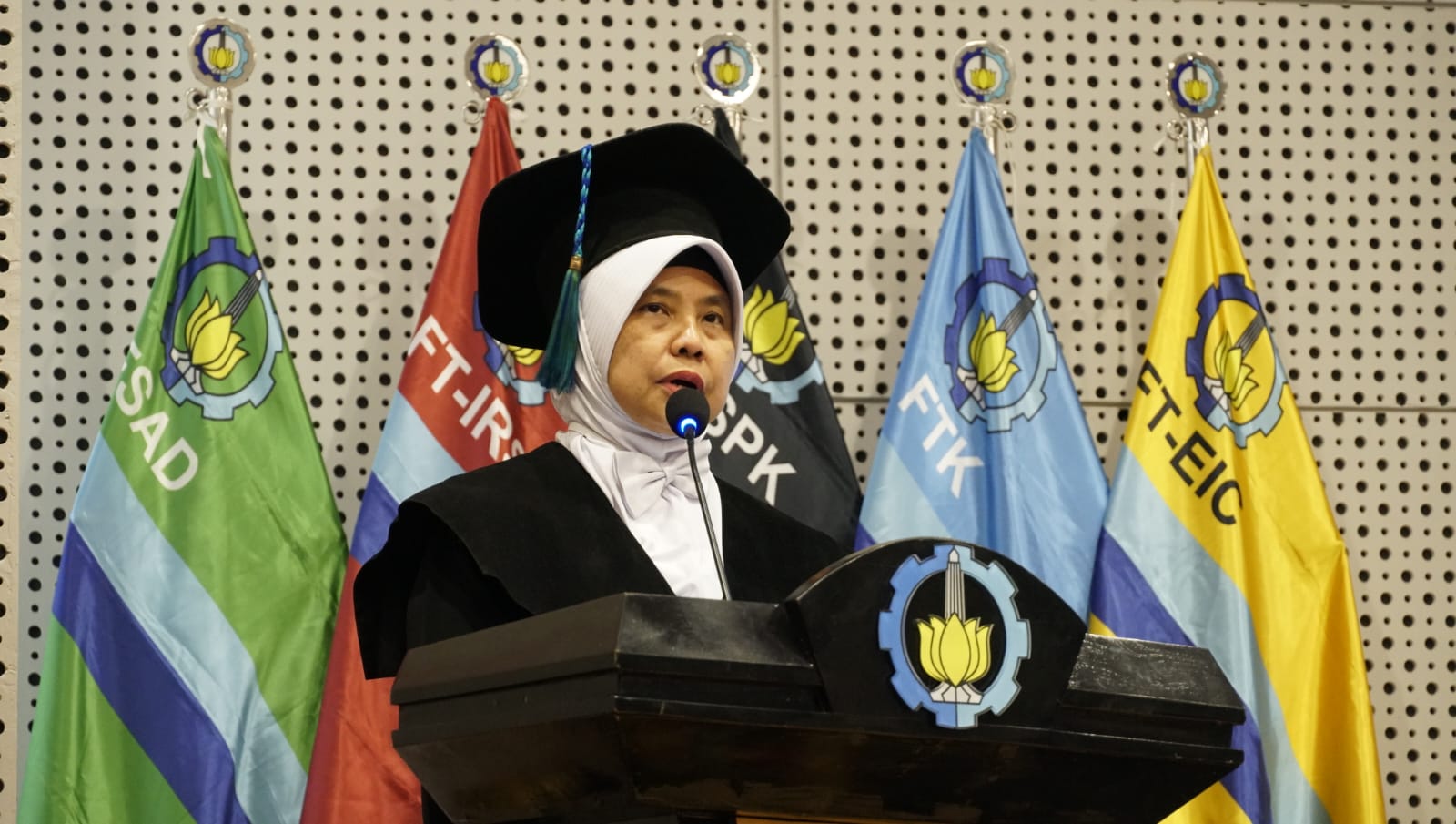
Prof Dr Trihastuti Agustinah ST MT when presenting the results of her scientific oration entitled Robotic Control Systems: Challenges and Opportunities
ITS Campus, ITS News — Robot control systems have undergone a significant revolution due to the way humans interact with machines in various fields. Seeing this, the Professor (Gubes) of Institut Teknologi Sepuluh Nopember (ITS), Prof Dr Trihastuti Agustinah ST MT, was encouraged to undergo an in-depth study on how to optimize the transport robot control system.
Tuti revealed that the results of her thoughts and research were contained in a scientific oration entitled Robotic Control Systems: Challenges and Opportunities. Robotic control, similar to the brain, helps robots make decisions, determine movements, and adapt to the ever-increasing complexity of human needs.
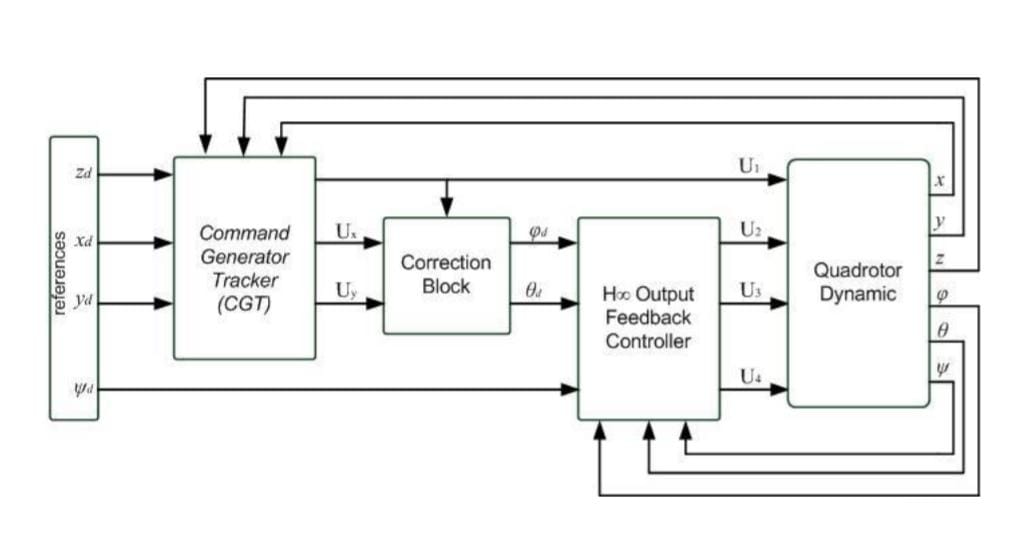
Schematic of the robot control system on a quadrotor designed by Prof Dr Trihastuti Agustinah ST MT in her research
Tuti explained that she chose robotic control systems as the focus of her research because of its very profitable potential in building humanity’s future. The robotic control system, as the brain of the robot, can support various needs of human life. “Starting from developing the manufacturing industry, health care, daily household tasks, to space exploration,” she explained.
For example, Tuti conducted research on transport robots, such as quadrotors or flying robots and mobile robots. These two robots, which are usually used for logistics, require a capable robotic control system to maintain and determine stability, tracking and obstacle avoidance methods. “This is important because these three are the main elements for the mobilization of the two robots,” she said.
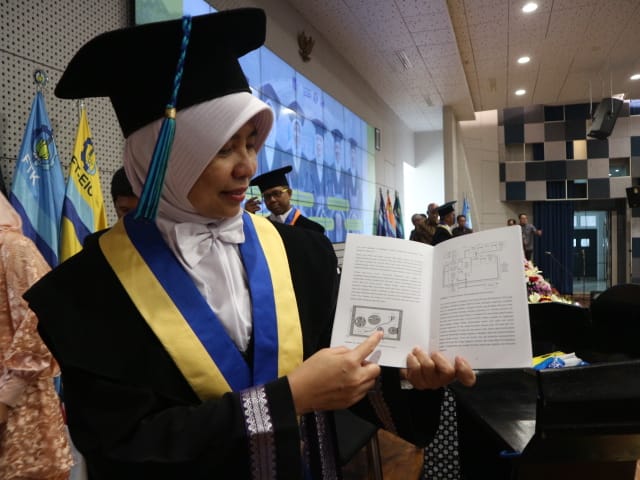
165th ITS Professor (Gubes) Prof Dr Trihastuti Agustinah ST MT shows the mobile robot scheme when testing the avoidance method
Tuti has conducted an in-depth study of robot system control strategies with a strong emphasis on aspects of stability and tracking accuracy. In addition, she has also attempted to identify effective methods in protecting robots from possible obstacles that may arise.
Specifically, on the quadrotor robot, Tuti applied the H-infinity output feedback method and Command Generator Tracker (CGT). More deeply, H-infinity output feedback to help control the robot system so that it remains stable and responsive to changes, so that the robot can minimize the disturbance it receives. Apart from that, this method was also chosen because it is flexible, simple, and has a very efficient design.
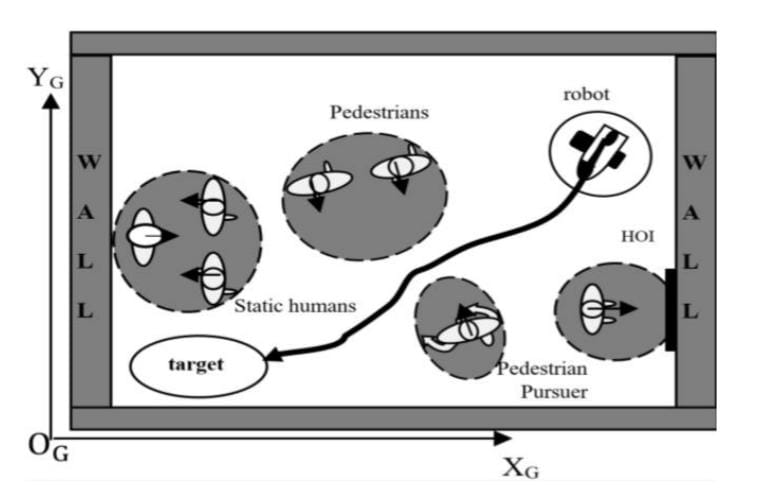
Method of avoiding mobile robots when they want to be simulated in a human environment
This is different with CGT, which plays a role in optimizing the tracking function of the robot. Based on research, CGT will later guide the robot to find the presence of information signals. “After that, CGT will give directions to the robot to track the signal’s whereabouts and subsequent movements,” added this woman from Pamekasan.
In Tuti’s next research, she studied how transport robots could move without threatening human safety through the use of mobile robots. Mobile robot itself is a type of robot that is able to move around in the human environment. “With that, the Hybrid Velocity Obstacles (HVO) method based on the Headed Social Force Model (HSFM) is used,” she explained.
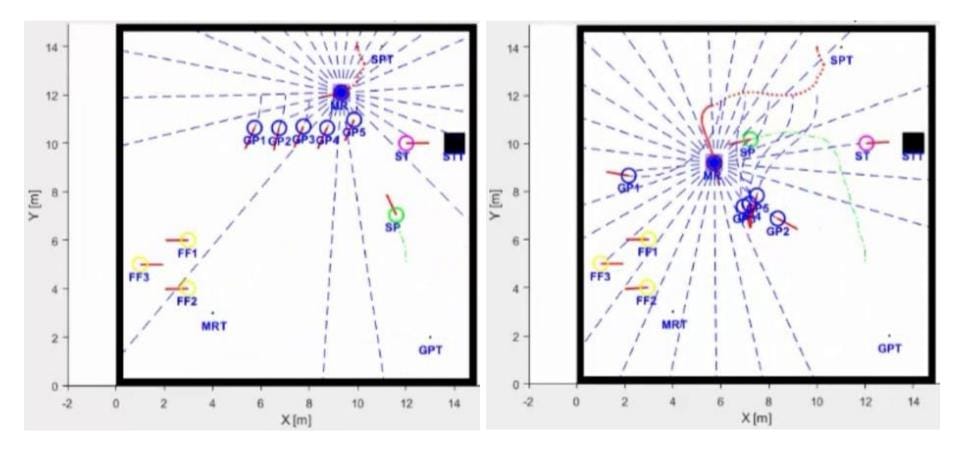
Illustration of a mobile robot moving away from pursuers and avoiding humans during testing
Even though she has found the right approach and method, the professor with a focus on robotics revealed that the application of this robot control system is still under development. She and her research group still need to optimize various aspects so that the robot’s logistics function can be maximized when operating for humans.
In this way, it is hoped that Tuti’s research can make a significant contribution to the development of robots that are safe and efficient in interacting with humans. In particular, the optimization of robotic control systems in the logistics sector can be realized optimally. “The presence of robot control innovation can be realized immediately to provide benefits to society,” she concluded proudly. (ITS Public Relations)
Reporter: Hibar Buana Puspa
Related News
-
Anticipating Lost Pet Dogs, ITS Students Invent a Tracking Bag
ITS Campus, ITS News —Losing a pet is a sad thing for its owners. To anticipate this, a team
September 26, 2023 11:09 -
ITS Students Integrate Smart City Service Features Through Visionaries
ITS Campus, ITS News — Institut Teknologi Sepuluh Nopember (ITS) continues to prove itself as a home for talented
September 26, 2023 11:09 -
ITS Students Innovate Eco-Quake Building Concept
ITS Campus, ITS News — Along with the development of technology, the construction sector has also experienced rapid growth
September 26, 2023 11:09 -
Great, ITS Successfully Becomes Overall Champion of the 2024 Indonesian Ship Contest
ITS Campus, ITS News — Proving itself as a home for champions, Institut Teknologi Sepuluh Nopember (ITS) managed to
September 26, 2023 11:09
